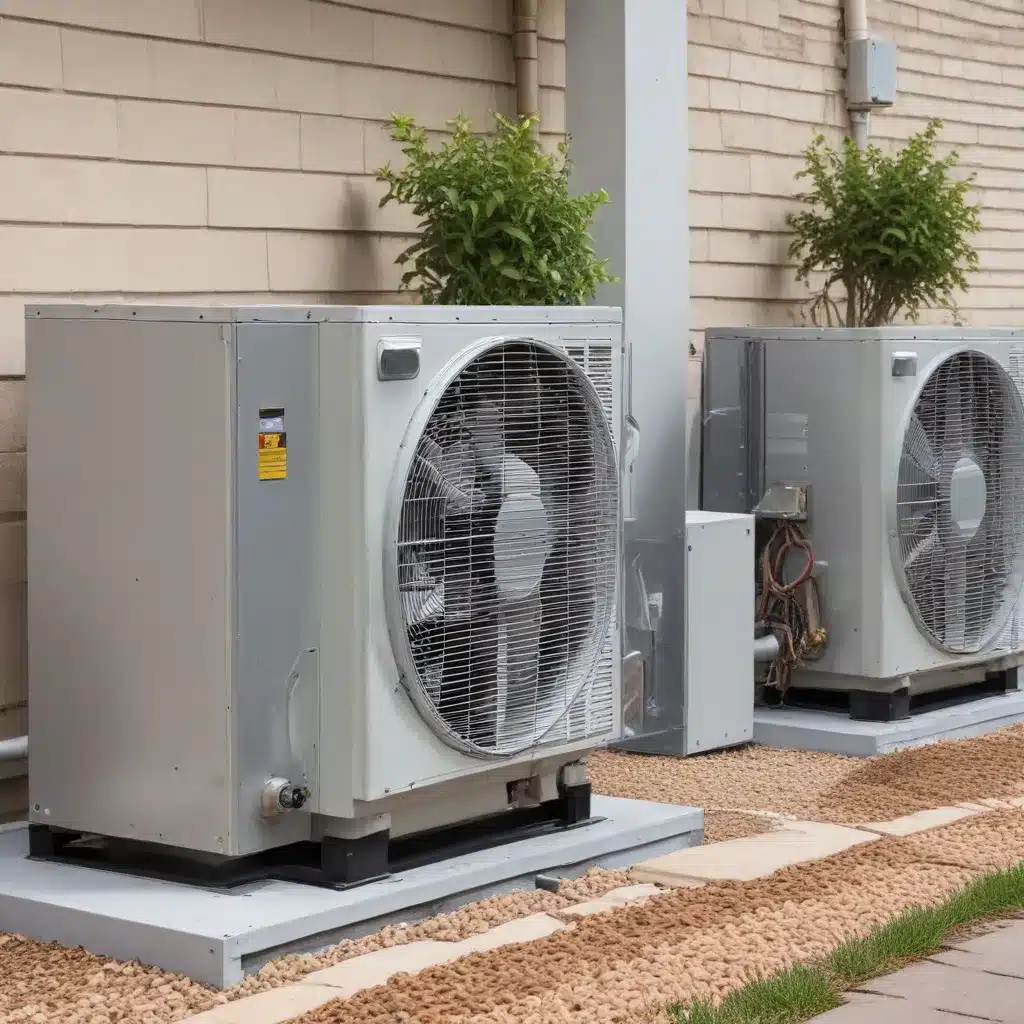
As an HVAC and refrigerant specialist, I’m excited to share insights on optimizing your systems for peak energy efficiency. The building sector accounts for over 36% of global energy consumption, and HVAC alone makes up more than 50% of that. Improving HVAC efficiency is a prime opportunity to drive meaningful energy savings and environmental impact.
Fundamental Principles of HVAC Efficiency
At the core of optimized HVAC performance are sound thermodynamic principles and a thorough understanding of key metrics. Let’s dive in.
Energy Consumption Analysis
HVAC systems are notoriously energy-intensive, so closely analyzing energy use patterns is crucial. Look at total kWh consumption, peak demand, and energy intensity metrics like kWh/sq ft. Identify opportunities to reduce equipment runtime, optimize airflow and pressure, and leverage zoning and modulation to match output to real-time loads.
Thermodynamic Principles
Refrigeration systems operate based on the vapor-compression cycle, where refrigerants undergo phase changes to absorb and reject heat. Understanding pressure-temperature relationships, the impact of superheat and subcooling, and refrigerant properties is key to maximizing thermodynamic efficiency.
Performance Metrics
Common HVAC performance metrics include coefficient of performance (COP), energy efficiency ratio (EER), and seasonal energy efficiency ratio (SEER). Tracking these KPIs helps optimize system design, operation, and maintenance to drive energy savings.
System Design Considerations
Proper HVAC system design is foundational to long-term efficiency. Let’s explore some critical factors.
Load Calculation Techniques
Accurate heating and cooling load calculations, factoring in building characteristics, occupancy, and climate, ensure HVAC equipment is properly sized. Oversized systems lead to inefficient part-load operation, while undersized equipment struggles to meet demands.
Equipment Selection Criteria
When choosing HVAC components, focus on high-efficiency models with features like variable-speed compressors, multi-stage heating/cooling, and advanced controls. Also, evaluate refrigerant options, prioritizing low-GWP (global warming potential) alternatives that align with environmental regulations.
Ductwork and Airflow Optimization
Properly sized and configured ductwork minimizes static pressure, reducing fan energy consumption. Optimize air distribution, supply/return balance, and air-side economizers to enhance airflow efficiency.
Advanced Control Strategies
Going beyond basic thermostats, smart HVAC controls can dramatically boost energy savings.
Programmable Thermostats
Intelligent thermostats with occupancy sensing, scheduling, and remote access capabilities enable targeted temperature setpoints and setbacks, tailoring comfort to actual needs.
Zoning and Modulation
Dividing spaces into independently controlled zones, coupled with variable-speed fans and compressors, allows the HVAC system to precisely match output to real-time loads, avoiding energy-wasting overcooling or overheating.
Sensor Integration
Connecting HVAC systems to a network of strategically placed sensors – measuring temperature, humidity, air quality, and occupancy – facilitates fault detection and diagnostics (FDD) and model predictive control (MPC) for optimal, adaptive operation.
Maintenance and Optimization
Ongoing maintenance and optimization are crucial to sustaining HVAC efficiency over a system’s lifetime.
Preventive Maintenance Practices
Regular filter changes, coil cleanings, refrigerant charge adjustments, and other proactive service tasks keep HVAC components operating at peak performance, minimizing energy waste from degradation.
Efficiency Monitoring and Diagnostics
Leveraging data from integrated sensors and controllers, fault detection and diagnostics (FDD) algorithms can identify efficiency-robbing issues like refrigerant leaks, airflow imbalances, or malfunctioning components, enabling timely repairs.
Retrofitting and Upgrades
As HVAC technology evolves, strategic retrofits like upgrading to high-efficiency motors, variable-frequency drives (VFDs), or a newer refrigerant can substantially improve the energy performance of aging systems.
Renewable Energy Integration
Pairing HVAC systems with renewable energy sources can create a synergistic, low-carbon heating and cooling solution.
Solar Thermal Systems
Solar thermal collectors can generate hot water to feed radiant heating systems or provide a thermal source for heat pumps, reducing the need for fossil fuel-powered heating.
Geothermal Heat Pumps
Taking advantage of the stable ground temperatures, geothermal heat pumps offer highly efficient, all-electric heating and cooling by transferring heat to or from the earth.
Hybrid HVAC Solutions
Combining traditional HVAC equipment with renewable technologies, like a hybrid air-source heat pump that switches between electric and gas operation, can optimize energy use and emissions.
Indoor Environmental Quality
While energy efficiency is crucial, maintaining occupant comfort and indoor environmental quality (IEQ) is equally important.
Ventilation and Air Quality
Proper ventilation, demand-controlled ventilation (DCV), and air filtration ensure adequate fresh air and remove indoor pollutants, promoting occupant health and productivity.
Humidity Control
Carefully managing indoor humidity, often through integrating desiccant dehumidification or energy recovery ventilation, prevents mold growth and optimizes comfort.
Thermal Comfort Optimization
Leveraging sensor data and advanced controls, HVAC systems can dynamically adjust temperatures, airflow, and other variables to maintain an ideal comfort range tailored to occupant preferences.
Building Envelope Enhancements
Improving the building envelope can significantly reduce the HVAC load, amplifying the impact of other efficiency measures.
Insulation Improvements
Upgrading wall, roof, and foundation insulation reduces heat transfer, diminishing the heating and cooling demands on the HVAC system.
Window Upgrades
Replacing old, inefficient windows with high-performance, low-emissivity glazing can dramatically improve the thermal performance of the building envelope.
Air Sealing Techniques
Identifying and sealing air leaks around windows, doors, and other building envelope penetrations minimizes uncontrolled ventilation, further cutting heating and cooling needs.
Utility Incentives and Regulations
Be sure to take advantage of energy efficiency incentives and comply with relevant HVAC standards and codes.
Energy Efficiency Rebates
Many utilities and government programs offer rebates and tax credits for upgrading to high-efficiency HVAC equipment or implementing other energy-saving measures.
HVAC Standards and Codes
Understanding and adhering to ENERGY STAR, ASHRAE, and other regulatory guidelines ensures HVAC systems meet minimum performance thresholds and align with environmental regulations.
Government Policies
Staying informed on evolving refrigerant phasedowns, equipment efficiency standards, and other sustainability-focused policies can inform strategic HVAC planning and investment decisions.
By implementing a holistic approach encompassing design, controls, maintenance, renewable integration, and building envelope enhancements, you can unlock the full potential of your HVAC systems to achieve maximum energy efficiency. As an HVAC and refrigerant specialist, I’m here to assist you in navigating these strategies and techniques to create more sustainable, high-performing facilities. Please visit Airgas Refrigerants to learn more about our comprehensive suite of products and services to support your HVAC optimization goals.

